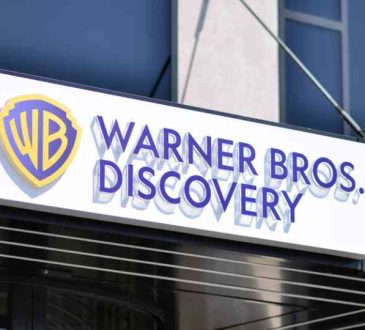Innovate or Die: What to do as Every Company Becomes a Tech Company

The 2020s are a tough time to be a business leader. Not only do you have to worry about keeping the business running, setting clear direction for your team, and planning for what’s next, now you also need to ensure you understand how a suite of new technologies will utterly reshape the business landscape.
In the next ten years, businesses will likely experience more technology-driven change than they faced in the last forty. Powerful technologies including artificial intelligence, blockchain, robotics, augmented reality, sensors, and next generation networks (5G and satellites) will rewrite the business landscape all over again. As a leader, you don’t need to understand the technical ins and outs of how these technologies work, but you must understand the profound business implications they present. Without this vital insight you are left vulnerable, unprepared to ask your IT department and suppliers educated questions that push them to keep you ahead of the competition.
Every company on the planet is now both a tech company and a data company, whether they have realized this fact yet or not. The gap between companies that embrace and invest in technology, and those that don’t, will widen dramatically in the next decade. Winners will deploy new technology to speed operations, improve products, deliver new services, create new business models, and delight customers. Companies that fail to appreciate the scale of the change that’s coming, or that adopt a wait-and-see approach, will fall behind. Once behind, catch up will be nearly impossible and they will slowly fade into irrelevance. Retail offers a sobering example of what’s at stake. Every week it seems yet another retailer has closed their doors, destroyed in the era of Amazon. Under-investment has serious consequences.
In a time of head-spinning technological change, how do leaders ensure they’re doing what it takes to stay relevant in a rapidly shifting and competitive marketplace? How do you decide where to invest—more capital equipment, more talent, or new technology? Answers will vary dependent on your specific situation, but here are a few things to consider.
As one of Intel’s two futurists, my job was to model the world ten years out. Now as an independent futurist, I help organizations of all sizes to think about their business five, ten, and 15 years into the future. By 2030, artificial intelligence will have utterly transformed the workplace. Automation will commoditize more physical work, and some knowledge work too. Augmented workers will blend human and machine intelligence to boost their creativity, knowledge, and other capabilities. We will live in a world of 100 trillion sensors, and 100 billion connected devices. Sensors let you get eyes on your business so you can make informed decisions in real time. They gather the data you need to run your business at lightspeed.
As every company becomes a data company, whoever has the best data wins. That means you need to build a comprehensive data strategy. Start to treat data like any other vital business asset, alongside capital equipment and talent – something you have to acquire, develop and extract value from. Data is crucial to the future of every company. It will improve the quality and speed of decisions, feed your future AIs, fuel customization and personalization efforts, create new revenue streams, and elevate your offerings.
Most organizations have three to five main business processes: A sales process, a manufacturing process, a customer support process, and so on. Drive your teams to examine every task involved in each of these processes and ask two tough questions: 1) Which tasks are best done by a human, which by a robot, and which by an AI? And 2) What data do we need to inform every decision we make? Some decisions can be fully automated, made at lightning speed by machines. Other decisions are best made by humans, though you should ask how their decisions can be informed by data, visualized and presented in a way that helps them make the highest quality decisions they can, as fast as they can. In the era of AI, there is little room left for humans to make “gut” decisions.
Further questions for you to ponder: What data do you need to feed your AIs? Remember, today’s data is tomorrow’s AI fuel. What data do you already have, trapped in silos inside your organization, and how can you free it? What data are you missing, and how can you acquire it, either through business agreements, alliances, or acquisition? What data could you get from sensors? How will your company use data, sensors, and artificial intelligence to elevate business models and get paid more for your efforts, moving upward from products to services, services to experiences, and experiences to transformations? How can you deploy automation technologies—AI, blockchain, sensors, and robotics—and free your employees to focus on higher value, more rewarding work? How can you augment your human talent, using AI and augmented reality to give them superpowers that allow them to excel in the workplace? Leaders will soon preside over a blended workforce: A collaboration of digital and human intelligence. As your CHRO and CIO become new best friends, how will you build high-functioning teams of humans and machines working together in teams?
In a time of great possibility, those with the strongest sense of purpose and the greatest will to drive change will prevail. A suite of six technologies will remake every business on the planet. That change will happen faster than you think. Be ready.
Have you read?
World’s Most Expensive Hotels For High Net Worth Individuals, 2020.
These Are The Most Traffic-Congested Cities In The World, 2020.
Workplace Burnout: Cities Around The World With The Most And Least Stressed Out Employees, 2020.
Which countries are most and least prepared to deal with an epidemic or pandemic like the Coronavirus?
Add CEOWORLD magazine to your Google News feed.
Follow CEOWORLD magazine headlines on: Google News, LinkedIn, Twitter, and Facebook.
This report/news/ranking/statistics has been prepared only for general guidance on matters of interest and does not constitute professional advice. You should not act upon the information contained in this publication without obtaining specific professional advice. No representation or warranty (express or implied) is given as to the accuracy or completeness of the information contained in this publication, and, to the extent permitted by law, CEOWORLD magazine does not accept or assume any liability, responsibility or duty of care for any consequences of you or anyone else acting, or refraining to act, in reliance on the information contained in this publication or for any decision based on it.
Copyright 2024 The CEOWORLD magazine. All rights reserved. This material (and any extract from it) must not be copied, redistributed or placed on any website, without CEOWORLD magazine' prior written consent. For media queries, please contact: info@ceoworld.biz
SUBSCRIBE NEWSLETTER








